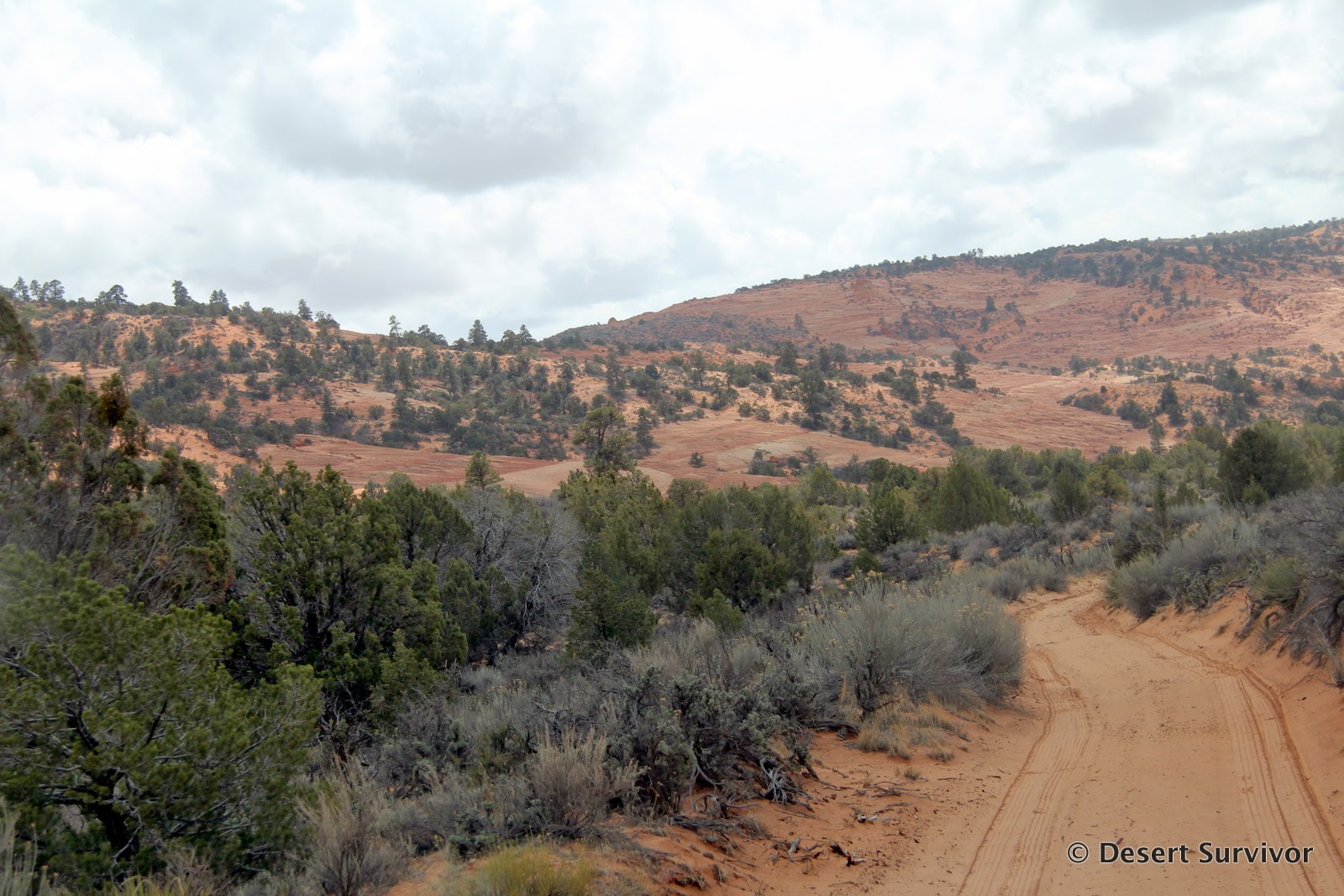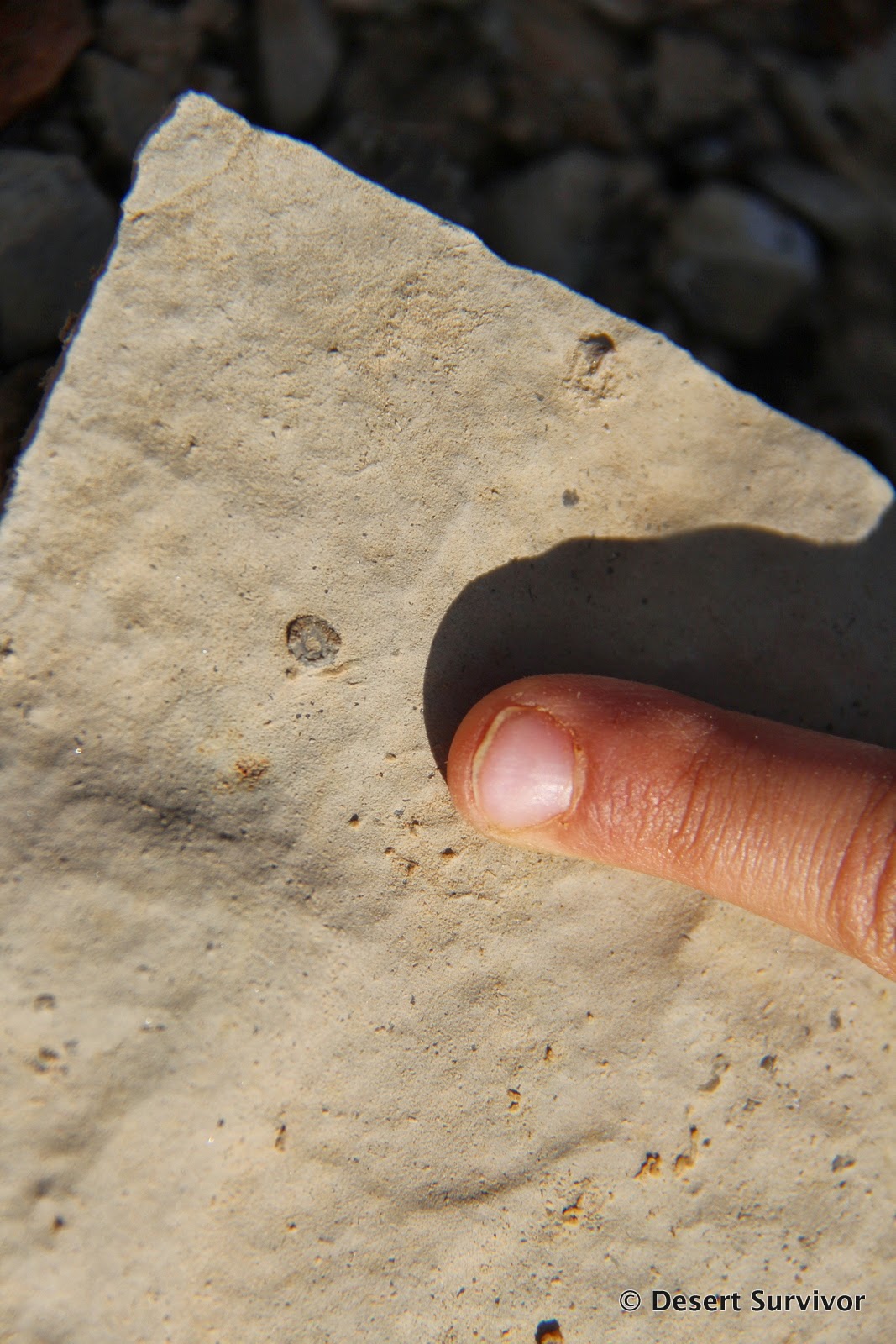 When we told some friends we were going to Coral Pink Sand Dunes State Park, they said to be sure to check out the Moccasin Mountain Dinosaur Trackway. When we got to the State Park, we asked the ranger and he gave us a very nice BLM brochure that had information about how to get to the trackway and also a map with GPS coordinates of the tracks.
When we told some friends we were going to Coral Pink Sand Dunes State Park, they said to be sure to check out the Moccasin Mountain Dinosaur Trackway. When we got to the State Park, we asked the ranger and he gave us a very nice BLM brochure that had information about how to get to the trackway and also a map with GPS coordinates of the tracks.
You can drive on pavement until the last 2.2 miles. Then it becomes a 4WD sandy road. For a bit I considered taking our van and trying to bike to the site, but in the end decided to take our truck. That was a good choice. For adults, the road would be a challenge, but for little kids hiking or biking, the road would be a little too much with the deep sand.
The ranger helpfully pointed out the place where people get stuck the most (with a $750 towing bill), and I did have to put the truck into 4 Low to get up that sandy hill. The other thing I noticed is that it's a one-lane road pretty much the whole way. For having such a nice brochure and website, it's not a place that can handle very much traffic. We only saw one other person the during the couple of hours we were there.
Before we got to the trackway, we visited a couple geocaches. The kids are so excited to find these, mainly because they love choosing a trinket. I love getting rid of old trinkets and seeing how long it's been since the last person has been to the geocache. Some are definitely more popular than others.
Then we were there, and it was a much shorter walk from the parking area to the tracks than I expected. Along the way we found some pools of water, and Desert Girl was delighted to be wearing her rain boots.
The tracks are here because this area was a watering hole, and the dinosaurs walked on the wet sand to get to the water, and then sand blew over the tracks. Over time the tracks fossilized, and now the rock above has eroded enough to let them be shown again.
It didn't take long to find our first track. This trackway has tracks from at least six different species of dinosaurs preserved.
Our favorites were the large Kayentapus tracks.
About six of the tracks were preserved in a line.
We also wandered around the beautiful rock for awhile, enjoying the solitude of the remote location and the beauty of the Navajo sandstone.
Eventually it was time to go. Through the puddles, of course.





































































